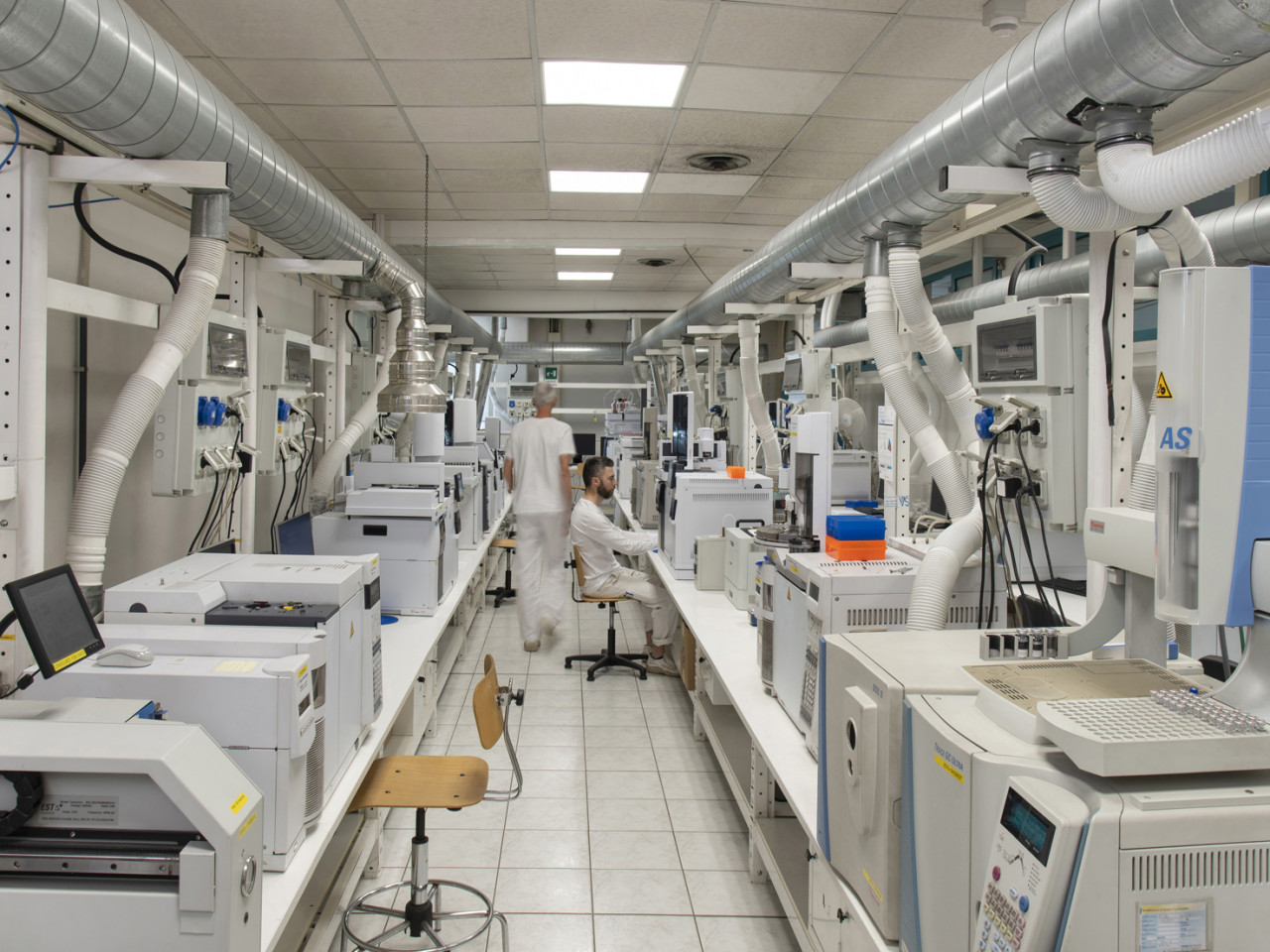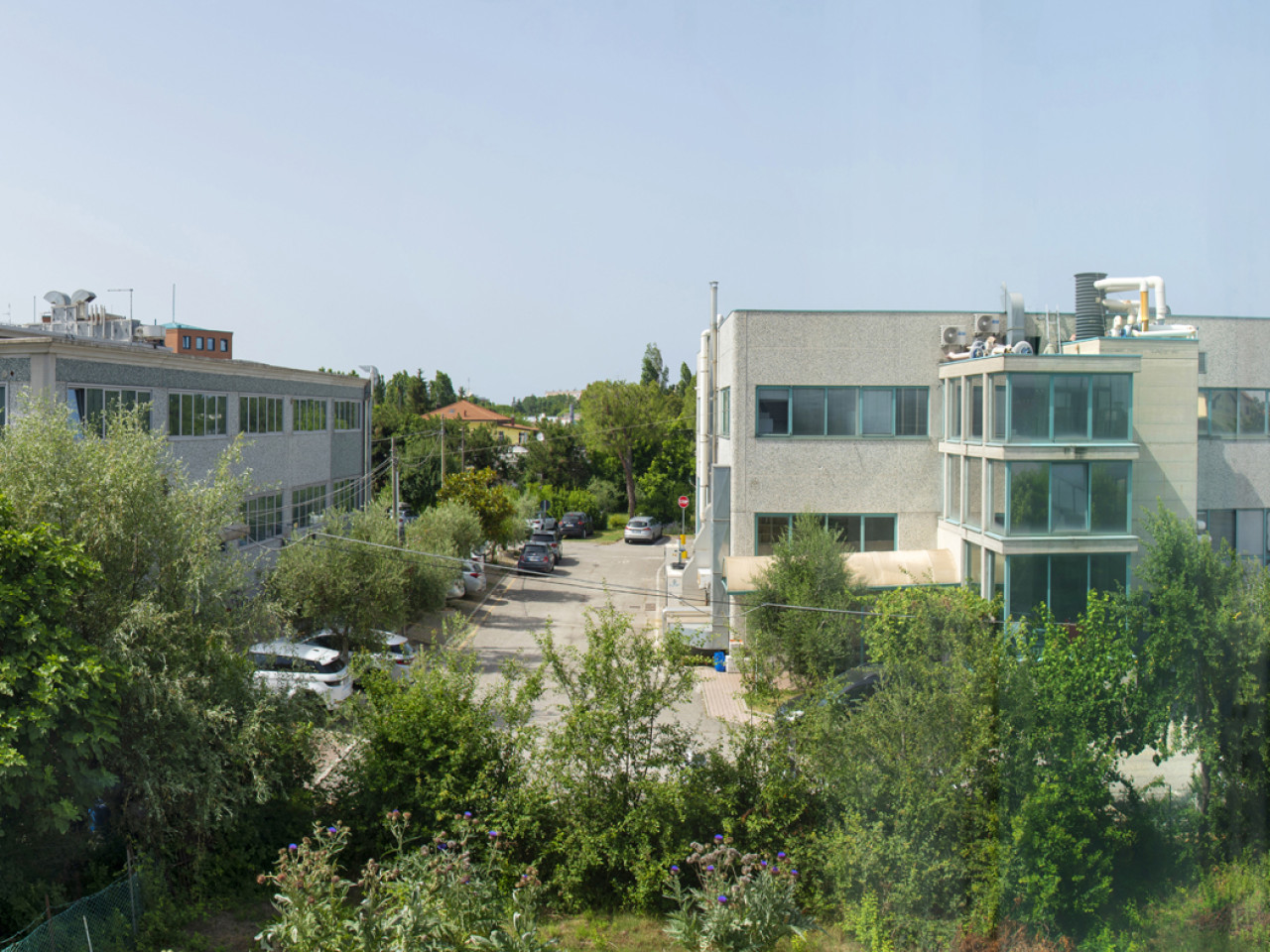Each healthcare institution annually produces large quantities of various kinds of special waste, almost 80% of which is represented by EWC 18.01.03 hazardous hospital infectious waste.
The average annual production in Emilia-Romagna, an Italy region, can vary from 1.5 kg/bed/day to 1.8 kg/bed/day with a strong environmental, social and economic impact. Till 2020 legislation required that this waste be disposed of with dedicated transport at authorized incineration plants involving a high environmental and economic impact.
Since September 2020, the Italian legislation following the new European Directive has unequivocally defined that potentially infectious waste subjected to on-site sterilization is under the same legal regime as mixed urban waste, therefore managed through the municipal garbage collection service with a significant reduction in their environmental impact as well as a substantial reduction in the costs faced by the healthcare system.
 Analytical laboratory
Analytical laboratory
CSA Group S.p.A. joined Newster System s.r.l. for the definition of an analysis protocol for the characterization of sterilized waste through the on-site installation of Newster sterilizers.
The characterization involved both chemical-physical aspects and microbiological parameters. Both hazardous infectious waste and mixed municipal waste were subjected to the same sterilization process.
The analytical results were compared and the protocol applied in different countries such as Italy, South Africa and the Philippines. C.S.A. Group developed the study and design of the phases and methods to verify the sterilization process and a subsequent activity of carrying out tests, including the microbiological and chemical-physical analysis of the two types of residues subjected to the Newster sterilization process.
The results obtained from the laboratory analyzes demonstrated that the performance of the Newster sterilizers complies with the international requirements for the sterilization of medical waste, represented by the STAATT level IV (6log10).
From the comparison of the analyzes conducted on both hospital waste and mixed urban waste subjected to the same sterilization process, it emerged that the two matrices have the same chemical-physical characterization without any dangerous characteristics, in support of the recent regulatory adaptation.
Newster sterilizers can be used by public or private hospitals, of various sizes, for the disposal of potentially infectious solid waste.
The installation does not require authorization from the competent public authority, but a simple communication in compliance with the current local legislation.
Thanks to its characteristics, the residue is subject to the same legal regime as solid urban waste.
This step will be fundamental for subsequent research projects in the field of End-of-Waste.
Monitoring was performed in various Italian facilities such as the Accredited Private Hospital Sol et Salust in Rimini and IRCCS Gruppo Multimedica in Milan.
Through the receipt of waste samples from Karl Bremer Hospital, Cape Town in South Africa and Rizal Medical Center Barangay Bagong Ilog Pasig City in the Philippines it was possible to monitor these installations also.
The monitoring concerned both microbiological and chemical-physical aspects.
The same chemical-physical and microbiological characterization was performed both on potentially infectious hospital waste and on mixed urban waste which was also subjected to the same sterilization process. The sites involved have been identified in three different countries, in hospitals where Newster sterilization systems are already operating.
The protocol is set up according to the following phases:
1) Weekly analysis of the quantities of mixed municipal waste and potentially infectious hazardous waste;
2) Reporting and comparative analysis of the quantities in order to identify the relationships between the two different wastes: on average, 1 kg of hospital waste is produced for every 3,5 kg of MSW;
3) Sampling of 7 kg of infectious waste divided by 1 kg per day (Sample A);
4) Execution of a daily sterilization cycle with municipal waste and sampling of 1 kg for 7 days. In total 7 kg (SAMPLE B);
5) Preparation of a mixed sample between sterilized hospital waste and mixed urban waste also sterilized in a ratio of 1:3.5 (SAMPLE C);
6) Execution of the same analytical protocol (chemical-physical characterization, leaching test, microbiological analysis) on all three samples;
7) Comparative analysis of the analyzed parameters using the values of the reference sample B as a benchmark.
Newster System srl (Italy)
Alloro Africa Enviro Service (South Africa)
Zenith Medical Equipment (Philippines)
Newster sterilizers are covered by an international patent and have been on the market for over 25 years.
The project implemented in collaboration with C.S.A. made it possible to validate the recent regulatory adaptation by associating the classification according to the law with a technical-scientific study to support the assimilation of the post-sterilization residue to municipal solid waste.
 CSA Group headquarters
CSA Group headquarters

